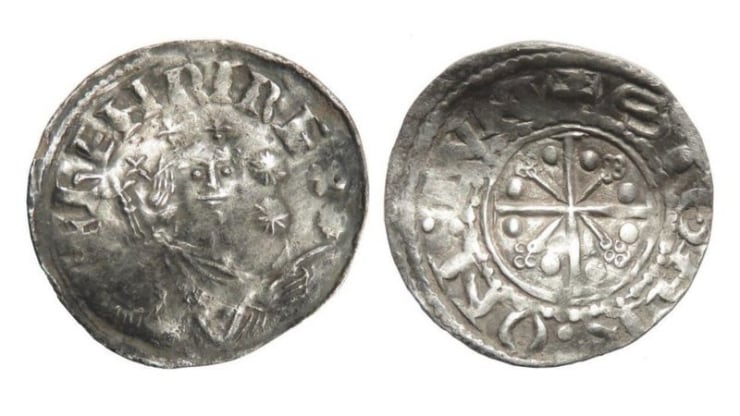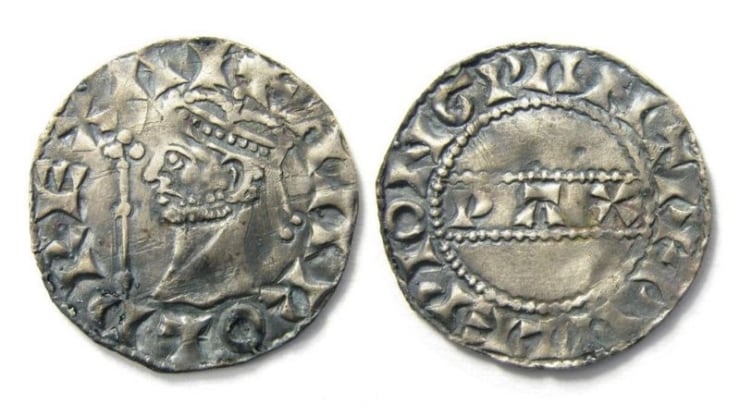Parada 
Two young detectorists found two very rare coins, they will be sold at auction
Categories: Minting - Numismatics , Finds and rescue research abroad , Nálezy nejenom s detektorem ve Velké Británii a Irsku
Sixteen-year-old Reece Pickering found a coin of the last Anglo-Saxon king at Topcroft in Norfolk and fifteen-year-old Walter Taylor found a silver penny from 1106 in Essex. As the coins were single and do not meet the Treasure Act, they can be auctioned into private hands. There is already a lot of interest in the auction; it will take place on 26-27 October and the preliminary estimate of the final price for both coins is about 100,000 crowns.
Reece was in the field with his father Jonny Crow when he found the silver coin: "I heard Reece shouting and waving from across the field. He kicked the dirt away, picked up the coin and rubbed it. We figured it was extraordinary," commented his father on the find. "It was kind of strange. I didn't expect to come across such a rare and remarkable coin. It's a day I'll remember forever. I can't imagine finding something so special again. You just never know what's under your feet," said Reece, now a 17-year-old cookery apprentice who searches with a metal detector almost every weekend.
The coin was recorded at the Fitzwilliam Museum in Cambridge. Only two examples exist so far. This one dates from 1066, the Battle of Hastings 954 years ago. It was minted by the last crowned Anglo-Saxon King Harold II, who reigned from 6 January 1066 until his death at the Battle of Hastings on 14 October 1066. He fought against the Norman invaders led by William the Conqueror. His death marked the end of Anglo-Saxon rule in England. The approximate price of the coin is around £3,000, or about 90,000 crowns at the current exchange rate.
The second coin mentioned is the find of sixteen-year-old Walter Taylor of Ongar, Essex - a silver penny of Henry I. "I found it in a field in south Essex on 9 September," said Walter, who was 15 at the time. "When I found the coin, I had been on the hunt with my dad and uncle for about four hours. I kept digging through the hot rocks (mineralised rock) and couldn't find anything useful. Then I got a signal with ID number 76. It was the coin, it was lying about 14cm in the ground," the excited youngster described the situation of the find to the BBC.
"I thought it was an ordinary penny, but when I brushed the mud off the coin, I saw a face staring at me. I suspected it might be a good find, so I sent the photo to an expert. He said it was really rare. I have been using the detector since I was four years old and this is my most significant find," said the senior.
The coin depicts Henry I pointing at a comet. Coincidentally, Comet Neowise was visible in the sky at the time Walter found the coin. The Normans were fascinated by the stars, which is why they had astronomical symbols on their coins. This penny was struck after the victory at Tinchebrai in Normandy in 1106. The battle was fought between invaders led by King Henry I of England and the Norman army of his older brother Robert II. Norman, known as "Shortsleeves".
The preliminary value of the coin was set at £3,000-3,500 (about 90,000-105,000 crowns). Both his and Reece's coins will be sold at auction on 26-27 October. "These are incredible historical finds. There are still treasures under our feet and these guys have found great examples of them. Take care of the penny and the pound will take care of itself. This adage is sure to come true in the upcoming auction," said Charles Hanson, owner of Hansons Auctioneers and an avid detectorist himself.
Roman Nemec

Coin found by Walter Taylor shows Henry I pointing at a comet

Coin of the last Anglo-Saxon king found by Reece Pickering at Topcroft in Norfolk

Silver penny of Harold II dated 1066
Sources: bbc.com, telegraph.co.uk, vcoins.com
The article is included in categories:









